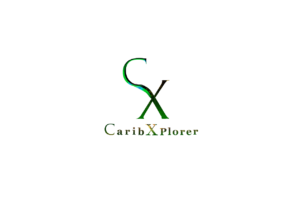see what we see
gallery
fuel your passion
CX photographer, Ian Boxill, shares photos that he took on a trek through the cloud forest at Holywell Park located in the Jamaica Blue and John Crow Mountain National Park, a UNESCO world Heritage site. Situated between 1000m and 3000m above sea level, cloud forests are said to be found in about 59 counties around the world. The Blue and John Crow National Park is located over 1000m above sea level and is one of the few forests of its kind in the Caribbean. Over half of the flowering plants in the park are unique to Jamaica and about one-third endemic to the area. Holywell is a hiker’s paradise with five trails, breath-taking scenery and clean fresh air virtually in the clouds.
CX photographer, Ian Boxill, shares photos that he took on a trek through the cloud forest at Holywell Park located in the Jamaica Blue and John Crow Mountain National Park, a UNESCO world Heritage site. Situated between 1000m and 3000m above sea level, cloud forests are said to be found in about 59 counties around the world. The Blue and John Crow National Park is located over 1000m above sea level and is one of the few forests of its kind in the Caribbean. Over half of the flowering plants in the park are unique to Jamaica and about one-third endemic to the area. Holywell is a hiker’s paradise with five trails, breath-taking scenery and clean fresh air virtually in the clouds.
CX photographer, Ian Boxill, shares photos that he took on a trek through the cloud forest at Holywell Park located in the Jamaica Blue and John Crow Mountain National Park, a UNESCO world Heritage site. Situated between 1000m and 3000m above sea level, cloud forests are said to be found in about 59 counties around the world. The Blue and John Crow National Park is located over 1000m above sea level and is one of the few forests of its kind in the Caribbean. Over half of the flowering plants in the park are unique to Jamaica and about one-third endemic to the area. Holywell is a hiker’s paradise with five trails, breath-taking scenery and clean fresh air virtually in the clouds.
CX photographer, Ian Boxill, shares photos that he took on a trek through the cloud forest at Holywell Park located in the Jamaica Blue and John Crow Mountain National Park, a UNESCO world Heritage site. Situated between 1000m and 3000m above sea level, cloud forests are said to be found in about 59 counties around the world. The Blue and John Crow National Park is located over 1000m above sea level and is one of the few forests of its kind in the Caribbean. Over half of the flowering plants in the park are unique to Jamaica and about one-third endemic to the area. Holywell is a hiker’s paradise with five trails, breath-taking scenery and clean fresh air virtually in the clouds.
CX photographer, Ian Boxill, shares photos that he took on a trek through the cloud forest at Holywell Park located in the Jamaica Blue and John Crow Mountain National Park, a UNESCO world Heritage site. Situated between 1000m and 3000m above sea level, cloud forests are said to be found in about 59 counties around the world. The Blue and John Crow National Park is located over 1000m above sea level and is one of the few forests of its kind in the Caribbean. Over half of the flowering plants in the park are unique to Jamaica and about one-third endemic to the area. Holywell is a hiker’s paradise with five trails, breath-taking scenery and clean fresh air virtually in the clouds.
Climate Change is causing sea level rise and beach erosion.
The Jamaican yellow snake, also known as the Jamaican boa, is a non-venomous species and the largest snake found on the island and is native to Jamaica. This black and yellow snake, which can grow up to 8 feet long, is Jamaica's largest natural predator. These snakes, on the other hand, measure about 6.5 feet. The coloration of a typical boa is golden yellow or orange to reddish brown on the front end, with darker coloration on the back, arms, and abdomen. Black spots dot the background, becoming denser as they progress down the body, creating irregular dark bands. The yellow snake can be found in montane and humid tropical forests, woodland, mangroves, swampland, and dry limestone scrub forest, among other places. They have been seen living in caves, rock crevices, thick vegetation, underground burrows, and trees, among other places. These snakes are nocturnal and spend the day in hiding. Changes in temperature, day length, and rainfall are thought to stimulate yellow snake breeding patterns, which occur between February and April. Female boas lay eggs, but they keep them in their bodies for 6-7 months before they hatch into young. Depending on her height, the female can deliver 5-44 babies in one go. After giving birth to the children, the female has no further involvement in their lives. (AnimalSake, 2009).
The Jamaican yellow snake, also known as the Jamaican boa, is a non-venomous species and the largest snake found on the island and is native to Jamaica. This black and yellow snake, which can grow up to 8 feet long, is Jamaica's largest natural predator. These snakes, on the other hand, measure about 6.5 feet. The coloration of a typical boa is golden yellow or orange to reddish brown on the front end, with darker coloration on the back, arms, and abdomen. Black spots dot the background, becoming denser as they progress down the body, creating irregular dark bands. The yellow snake can be found in montane and humid tropical forests, woodland, mangroves, swampland, and dry limestone scrub forest, among other places. They have been seen living in caves, rock crevices, thick vegetation, underground burrows, and trees, among other places. These snakes are nocturnal and spend the day in hiding. Changes in temperature, day length, and rainfall are thought to stimulate yellow snake breeding patterns, which occur between February and April. Female boas lay eggs, but they keep them in their bodies for 6-7 months before they hatch into young. Depending on her height, the female can deliver 5-44 babies in one go. After giving birth to the children, the female has no further involvement in their lives. (AnimalSake, 2009).
The Jamaican crocodile is known as Crocodylus acutus and it is Jamaica's only crocodilian and the largest reptile. The bulk of Jamaica's crocodile populations live in wetlands which include swamps, mangrove and rivers which can be found in places like the Black River Great Morass and Milk River. In Jamaica, the many people believe that crocodiles are dangerous animals that pose a constant threat to them. However, the Crocodile is perhaps one of the shyest crocodilian species. Unless they are molested or assaulted, they will avoid confrontation. Adult female crocodiles that are nesting become more aggressive during the nesting season (March to June each year) to defend their nest and young. During droughts or periods of low rainfall, crocodile wading ponds serve as a source of water for a variety of animals.
The Jamaican crocodile is known as Crocodylus acutus and it is Jamaica's only crocodilian and the largest reptile. The bulk of Jamaica's crocodile populations live in wetlands which include swamps, mangrove and rivers which can be found in places like the Black River Great Morass and Milk River. In Jamaica, the many people believe that crocodiles are dangerous animals that pose a constant threat to them. However, the Crocodile is perhaps one of the shyest crocodilian species. Unless they are molested or assaulted, they will avoid confrontation. Adult female crocodiles that are nesting become more aggressive during the nesting season (March to June each year) to defend their nest and young. During droughts or periods of low rainfall, crocodile wading ponds serve as a source of water for a variety of animals.
The Jamaican crocodile is known as Crocodylus acutus and it is Jamaica's only crocodilian and the largest reptile. The bulk of Jamaica's crocodile populations live in wetlands which include swamps, mangrove and rivers which can be found in places like the Black River Great Morass and Milk River. In Jamaica, the many people believe that crocodiles are dangerous animals that pose a constant threat to them. However, the Crocodile is perhaps one of the shyest crocodilian species. Unless they are molested or assaulted, they will avoid confrontation. Adult female crocodiles that are nesting become more aggressive during the nesting season (March to June each year) to defend their nest and young. During droughts or periods of low rainfall, crocodile wading ponds serve as a source of water for a variety of animals.
The Jamaican crocodile is known as Crocodylus acutus and it is Jamaica's only crocodilian and the largest reptile. The bulk of Jamaica's crocodile populations live in wetlands which include swamps, mangrove and rivers which can be found in places like the Black River Great Morass and Milk River. In Jamaica, the many people believe that crocodiles are dangerous animals that pose a constant threat to them. However, the Crocodile is perhaps one of the shyest crocodilian species. Unless they are molested or assaulted, they will avoid confrontation. Adult female crocodiles that are nesting become more aggressive during the nesting season (March to June each year) to defend their nest and young. During droughts or periods of low rainfall, crocodile wading ponds serve as a source of water for a variety of animals.
The Jamaican crocodile is known as Crocodylus acutus and it is Jamaica's only crocodilian and the largest reptile. The bulk of Jamaica's crocodile populations live in wetlands which include swamps, mangrove and rivers which can be found in places like the Black River Great Morass and Milk River. In Jamaica, the many people believe that crocodiles are dangerous animals that pose a constant threat to them. However, the Crocodile is perhaps one of the shyest crocodilian species. Unless they are molested or assaulted, they will avoid confrontation. Adult female crocodiles that are nesting become more aggressive during the nesting season (March to June each year) to defend their nest and young. During droughts or periods of low rainfall, crocodile wading ponds serve as a source of water for a variety of animals.
Copyright © 2021 CaribXplorer. All rights reserved.
- Sited By : Simply Tekhnics
- caribxplorer@gmail.com
- Mona, Kingston Jamaicais

